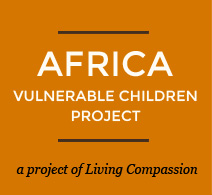Forgive us as we abbreviate the blogs. There are miles to go before we sleep (literally and figuratively!). We depart Wednesday and have much we hope to accomplish. We are committed to taking many photos as we go through our last two days so we can keep you informed even if we run out of time to write as thoroughly as we wish.
We were supposed to meet the iConnect folks out in Kantolomba at 10. Turns out they had forgotten they had a major event to attend this morning and their whole staff was to be tied up. They promised they will be out tomorrow.
We had already gotten an early start and took advantage of the extra time to fit our last chitenge shopping in, knowing that tomorrow is certain to be non-stop. We promised Jasmine we would bring more chitenge back for her to play with for her samples and we have a very fun hermitage upgrading project in process back at the Monastery and we hope to make curtains using chitenge (we are certain to need volunteer assistance to get them sewn so email us if you would like to take part). As we mentioned we make every effort to purchase only fabric made in Zambia. There was a great one that was not Zambian and we asked where it was made: Pakistan. When we looked at it up close it had “Cote D’Ivoire” printed on it. When we pointed this out, a Zambian who works in the shop (which is owned by an Indian family) said they just print whatever they wish but it comes from Pakistan.
We arrived in Kantolomba earlier than other days and were in time to see most of the children—what a treat! We walked into Beatrice's class and remarked, “This must be the baby class.” They are so little and incredibly cute!! They were just about to start on a drawing project. We got to hang out for a bit and look over their shoulders as they created their works of art.

Here are some scenes from the younger class
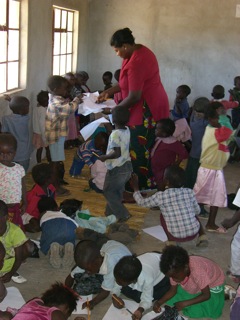
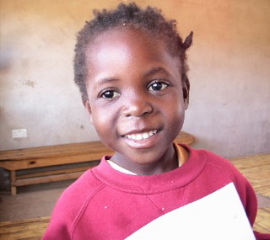
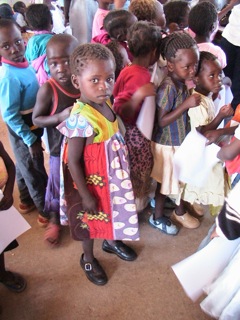
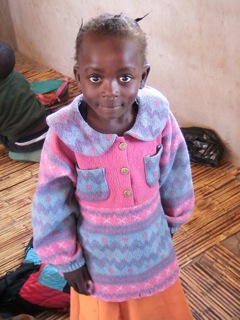
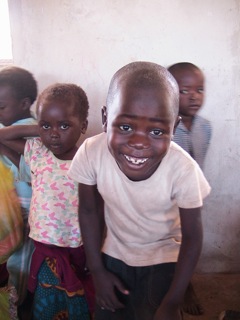
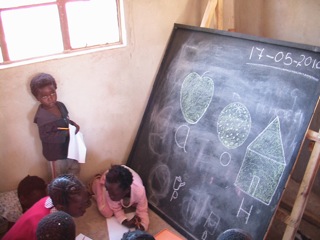
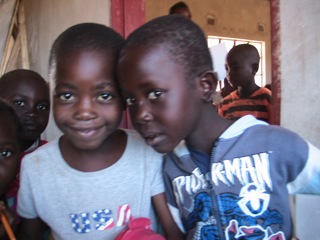
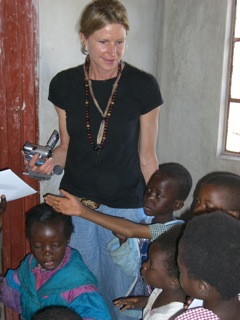
Ethel and Charles were in full swing with the older children. Ethel teaches the middle-school age children who do not know how to read and write.
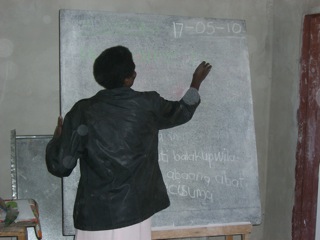
Ethel
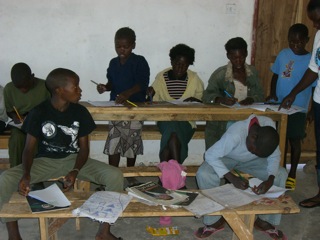
Some of the middle school kids
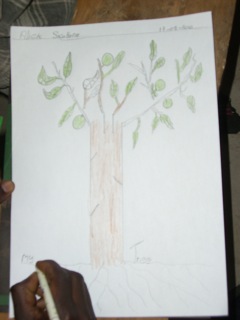
A drawing by one of Ethel's students
Charles teaches those who do, most of whom are with us for extra tutoring in the morning and go off to local governments schools in the afternoon.

Charles tutoring the high school kids
We got to meet Mercy (we had previously thought her name was Macy), the young woman who is now #1 in her grade 6 class

Mercy with a t-shirt that was hand painted at the Bridge Walk!
She was shy but we got a tiny smile when we congratulated her on her success. We got to read through a recent test they took and were glad we did not have to take it.
Mukonda came out before lunch to say goodbye to the team. It is clear from her interactions with people that she has cared for the community and they for her. She was able to assist with a few medical issues while there as well: one of our older students came by needing a sore to be cleaned and disinfected; Ethel had a difficult night last night feeling sick to her stomach (she is adjusting to being recently put on ARVs); Baby Deborah, whom you may remember from last August’s blog as the newborn of Agness on the Living Compassion team, is appearing to be malnourished.
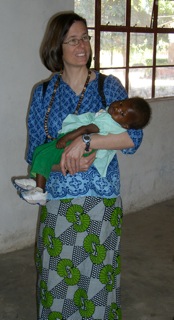
Jen with Baby Deborah
This last one is a bit of a mystery to everyone. Theresa and other of the senior cooperative members have been telling Agness they are worried about Deborah and finally required Agness to stay home for a week to care for her and be sure she is getting plenty to eat. Deborah is cared for by a 13 year old sister. Theresa said Deborah seems to be getting better.
After lunch a group of us walked to Ethel’s property to take the before photos of her house and roof. Just having received a roof loan, her house will be transformed by the next time we are here.
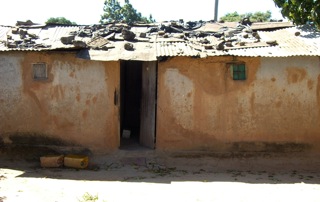
Ethel's home is the recipient of roof loan funded by a team of donors from Texas
It is always a good reminder walking through the compound that while the Living Compassion property is clean, beautiful, quiet, well-cared for and everyone there is eating well and drinking clean water, this is not the case in all of Kantolomba. One particularly chilling scene captures much of it: we passed by a truck delivering molasses to a resident. Molasses is brought into the compound in 50-gallon drums on the back of trucks. This truck, we would guess, was made around 1940—truly hard to imagine how it was still running. The barrels the molasses is in are also ancient. The man making the delivery would dip an old bucket into one of the drums and pour it over the side into the buyer’s drum (also old and very dirty), using an old piece of plastic tarp as a funnel to assist in keeping most of the molasses from dripping onto the ground. The man buying the molasses was very drunk. In the area around his house sat his wife (busy with cooking and dishes) and several children and a kichasu distillery. Kichasu is the illegal liquor made from corn. It is reported to be deathly strong—just a tiny bit will get you very drunk, making it an economical way to drink. It is the main industry in Kantolomba.
We did not ask to take a photo.
Walking back to the Living Compassion property we were overwhelmed both with gratitude for the oasis this cooperative has created for themselves as well as a strong desire to expand to include all those who wish to benefit.
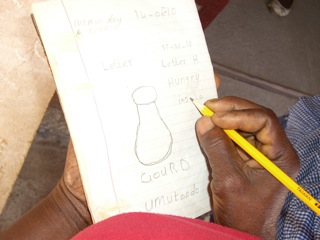
The adults doing their daily English lesson
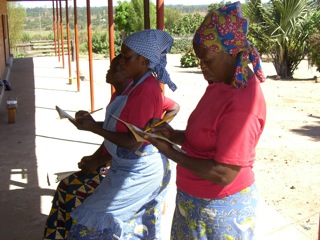
Some of the team members copy the word of the day from the chalk board into their note books
We finished up in Kantolomba and got back to town in time to withdraw a great deal of kwacha from the bank. It is a cash economy and with the many expenditures we have in the next few days (the largest being the new sewing machines) and the largest bill being the equivalent of $10, we ended up with several large stacks of money. We carry our bags “casually” close to our chest as we leave the bank.
Our last stop was at the sewing shop to arrange for picking up the machines first thing tomorrow morning. We made a down payment and agreed we would come by tomorrow at 8:45am to collect our three new machines. Can’t wait!

Nancy writing a receipt for the piles of kwacha received for the sewing machine down payment
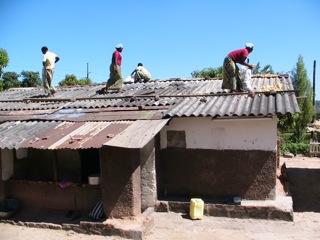
Gathering the dried maize from the roof top
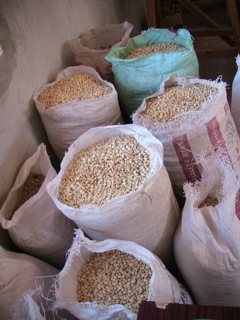
How many bags of maize would our food program need for one day?
Did you guess 7?
